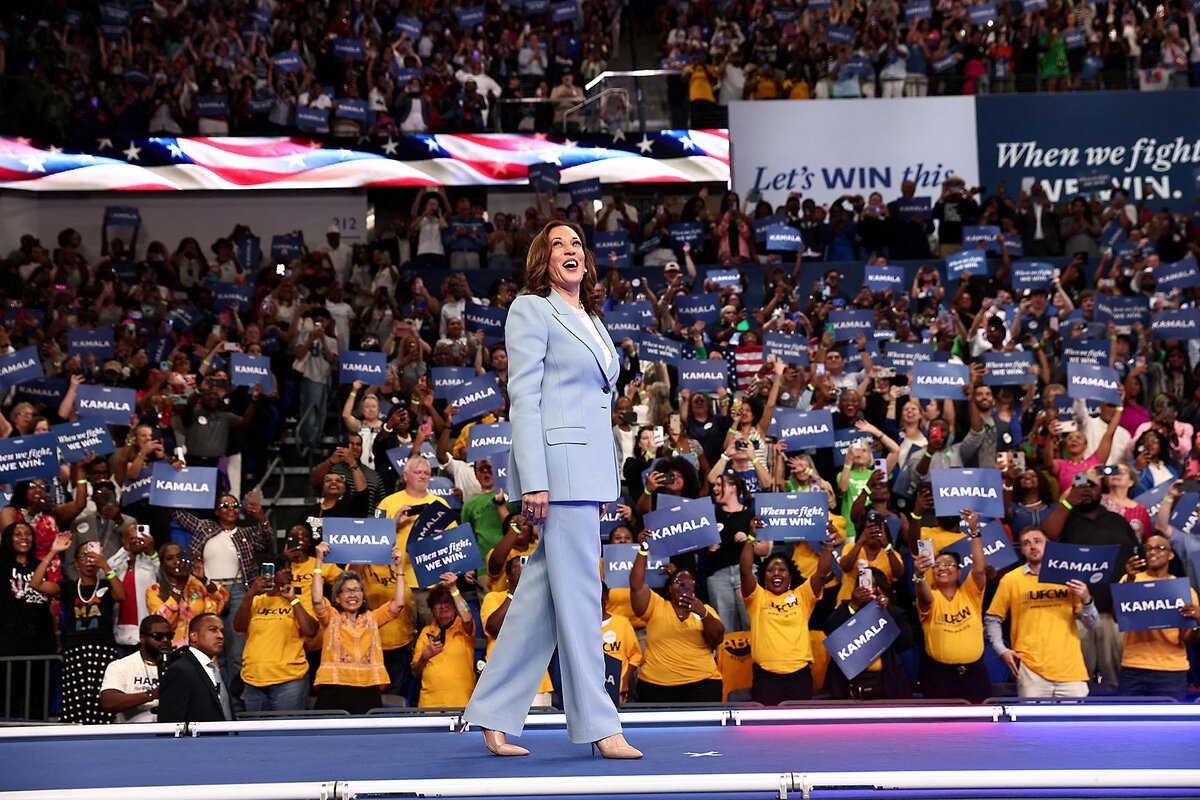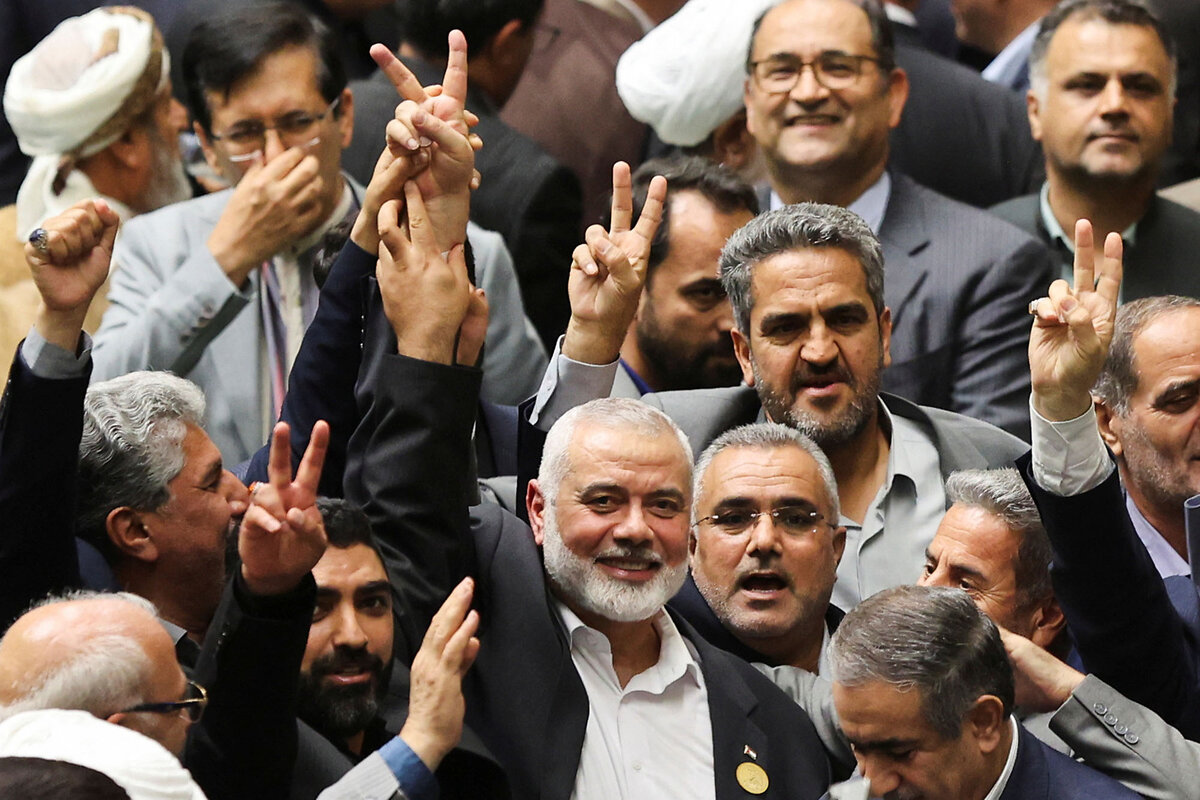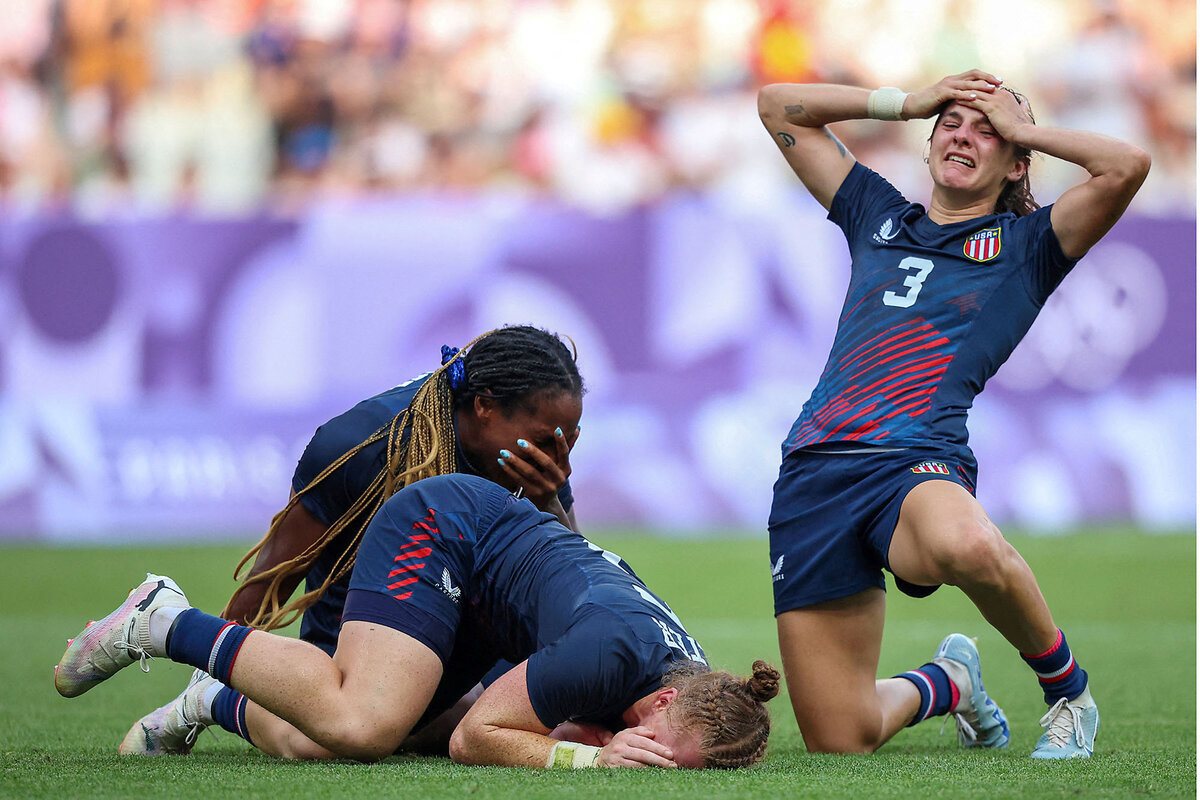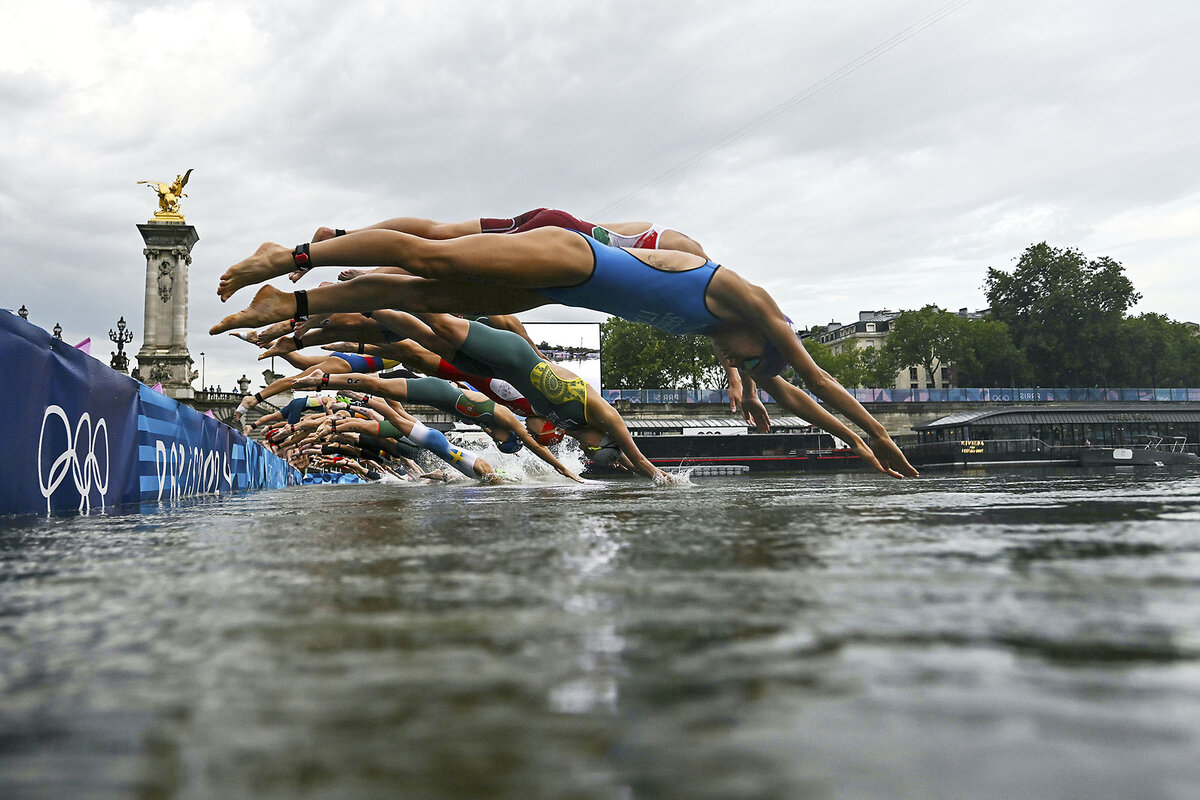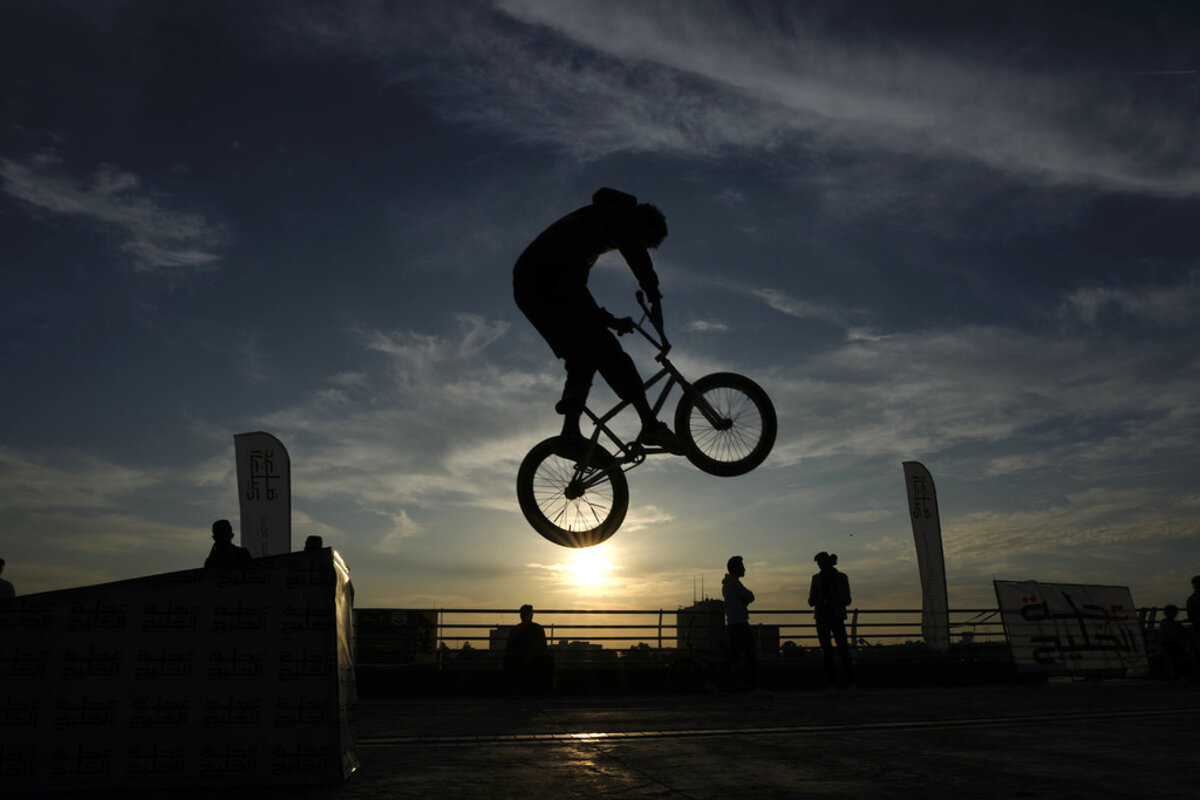Kamala Harris is polling better than Joe Biden among young voters, Black and Hispanic voters, and suburbanites. The trade-off: She’s doing slightly worse among white voters without college degrees. All this may affect the electoral map.

Why is Christian Science in our name?
Our name is about honesty. The Monitor is owned by The Christian Science Church, and we’ve always been transparent about that.
The Church publishes the Monitor because it sees good journalism as vital to progress in the world. Since 1908, we’ve aimed “to injure no man, but to bless all mankind,” as our founder, Mary Baker Eddy, put it.
Here, you’ll find award-winning journalism not driven by commercial influences – a news organization that takes seriously its mission to uplift the world by seeking solutions and finding reasons for credible hope.
Explore values journalism About usMonitor Daily Podcast
- Follow us:
- Apple Podcasts
- Spotify
- RSS Feed
- Download
 Mark Sappenfield
Mark Sappenfield
I’ve been watching the Olympics here in Germany. Given America’s medal dominance, I thought German television would show a fair bit of Team USA. The reality? Only if your name is Simone Biles.
That’s a shame. There are so many good stories and athletes. But then I realized it goes the other way, too. Americans surely have not cried with Ricarda Funk, the German kayaking favorite whose catastrophic mistake left her in tears. Or seen the silky skills of basketball star Dennis Schröder.
It’s a lesson I learned covering the Olympics. The greatest joy comes from a willingness to see amazingness everywhere.
Already a subscriber? Log in
Help fund Monitor journalism for $11/ month
Monitor journalism changes lives because we open that too-small box that most people think they live in. We believe news can and should expand a sense of identity and possibility beyond narrow conventional expectations.
Our work isn't possible without your support.
Today’s stories
And why we wrote them
( 6 min. read )
Today’s news briefs
• Rio Grande barrier: The 5th U.S. Circuit Court of Appeals allows a floating barrier in the Rio Grande that helps block illegal immigration to stay for now.
• Italian asylum plan: Migrants rescued at sea while attempting to reach Italy are likely to be transported to Albania beginning next month while their asylum claims are processed under a deal between the two countries.
• California fire: Fire crews are working to hold on to the progress made against the Park Fire, the largest blaze in California this year, ahead of warming temperatures forecast for later this week.
• Canada loses Olympic appeal: A panel of the Court of Arbitration for Sport confirms the six-point deduction imposed on the Canadian Olympic women’s soccer team. Two assistant coaches used drones to spy on New Zealand’s practices last week.
( 4 min. read )
Ever since the Hamas-Israel war erupted last October, and was joined swiftly by Iran’s regional allies, the world has feared a larger conflict in the Middle East. Two assassinations within 12 hours have ratcheted up those concerns.
( 6 min. read )
Even before the U.S. women’s gymnastics team led by Simone Biles regained its gold medal, women’s sports, such as WNBA games, were proving to be a big draw. How do the Olympics feed this interest?
( 5 min. read )
Rising costs and faltering hospitals are causing many Southern conservatives to reconsider the government’s role in health care – and how affordable access bolsters community well-being.
( 4 min. read )
The emotionally charged debate over the future of a French-backed currency in West and Central Africa runs deeper than economics. For many, it is a potent symbol of France’s unequal relationship with its former colonies here.
( 4 min. read )
Paris organizers were determined to pull off something no one had done in a century: make the Seine swimmable. After delays, in which athletes found themselves at the mercy of the weather and the host city’s ambitions, the triathlon was on.
The Monitor's View
( 2 min. read )
Sitting at the heart of the Middle East – where ancient hatreds are again driving war across the region – Iraq is taking an extraordinary step to quell such hatred. In an agreement with the United Nations in July, it formally decided to conduct a population census without asking Iraqis to identify themselves by religious sect or ethnicity – “to avoid any division within the society,” the government stated.
The move was endorsed by Iraq’s highest court earlier this year. It reflects a rising sentiment among Iraqis to be treated as individual citizens after decades of violent conflicts driven by ethnic and sectarian stigmas.
A survey of Iraqis in 2022 found that fewer than a third feel they experience social and economic equality. In 2019, mass youth-led protests took aim at Iraq’s democratic power structure in which top positions are divvied out to Sunnis, Shiites, or Kurds, creating an inherently corrupt system of patronage. “Yazidis, Sunnis, Christians, we are all here to just be real Iraqis and support each other for freedom and for a good life,” said one protester.
The coming population census, which starts Nov. 20, will be the first nationwide count since the 1980s. The long delay is a result of wars, political differences, and the COVID-19 pandemic. A pilot census took place in May in the Kurdistan region and saw a 98% participation rate.
The census will focus mainly on collecting data to enhance the economy and ensure a fair distribution of government resources. Yet by not dividing people by personal identity, it also supports Iraqis who see citizenship based on broad ideals. The words equal and equality are mentioned eight times in the 2005 constitution.
Societies are best organized around an identity of civic rights based on the view of each individual being capable of self-rule, says scholar Francis Fukuyama. “Unless we can work our way back to more universal understandings of human dignity, we will doom ourselves to continuing conflict,” he wrote in his book “Identity.”
Many Iraqis are looking forward to a census-taker showing up at their door. “It is in everyone’s interest to be counted and not to erode anyone’s rights, as in the past,” Zaki Niyaz, a resident of Kirkuk, told Rudaw Media Network.
Wars may still be raging around Iraq in November. But the hatred that drives them may have started to wane.
A Christian Science Perspective
Each weekday, the Monitor includes one clearly labeled religious article offering spiritual insight on contemporary issues, including the news. The publication – in its various forms – is produced for anyone who cares about the progress of the human endeavor around the world and seeks news reported with compassion, intelligence, and an essentially constructive lens. For many, that caring has religious roots. For many, it does not. The Monitor has always embraced both audiences. The Monitor is owned by a church – The First Church of Christ, Scientist, in Boston – whose founder was concerned with both the state of the world and the quality of available news.
( 3 min. read )
As we understand that all true thoughts come from the divine Mind, bad memories and their effects fade away.
Viewfinder
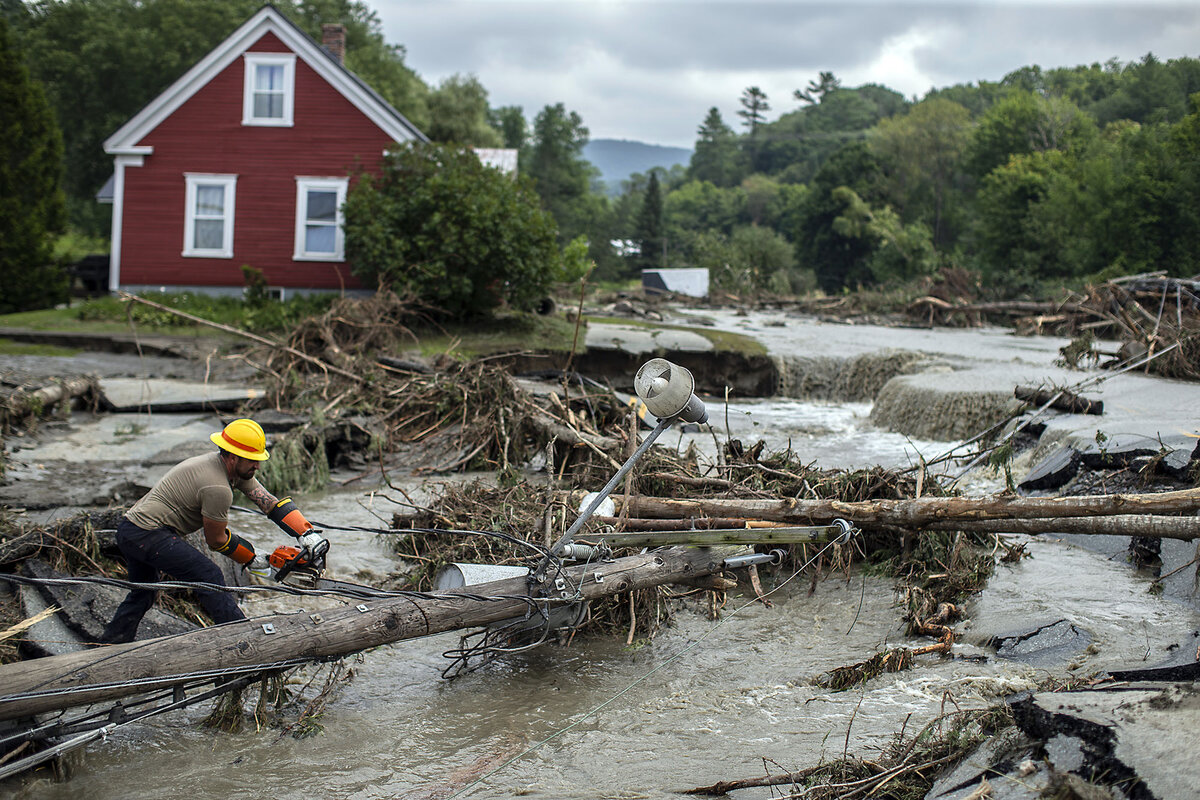
A look ahead
We’re so glad you could join us today. Please come back tomorrow when Taylor Luck looks at how the assassination of a Hamas leader in Iran – a man regarded as a relative moderate – affects the prospects for a cease-fire and the path forward for Hamas.



